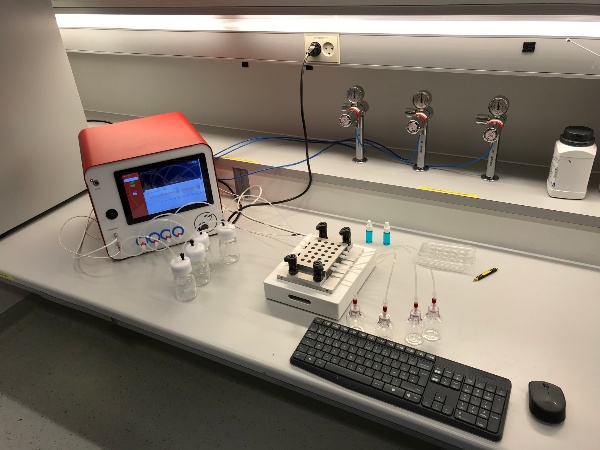The human body: systems, organs, and main functions

The external layer, the integumentary organ system
The integument forms the external cover of the organism and is composed of skin, hair, subcutaneous tissue, nails, and of course associated glands: the sudoriparous and the sebaceous glands [3]. Its main role is to protect the organism against any external damages and infections. Therefore, it is considered the first barrier between the body and the environment. It also controls temperature and water loss. It has an important role in the synthesis of Vitamin D because it takes place in the integument. The integument system includes a variety of receptors such as pain, pressure, or burning sensors, responsible for its preventive role.
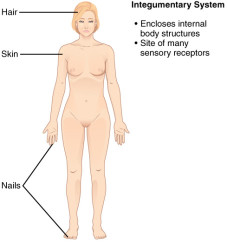
The skeletal system, the internal scaffold
The skeletal system is the system that contains all the bones. Each bone is a very complex tissue made up of cells, protein fibers, and minerals [4]. The bone acts as a scaffold giving structural support and protection for the soft tissues and other organs. It also provides attachment points for different muscles and tendons. Blood globules synthesis in the bone marrow occurs within this skeletal system.[5]. Moreover, it stores minerals that are crucial for physiology (ionic homeostasis).
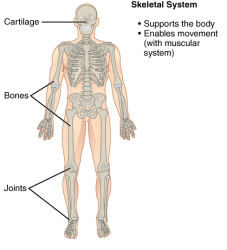
The muscular system
This organ system acts as a junction within the skeletal system. Bones are the static support part of the body while the muscles provide the dynamic movement by moving the bones. The muscles are responsible for the locomotion or its facial expression. This muscular system is the one that keeps the body in a straight position and allows the human to walk using only two points of support. [6-7]
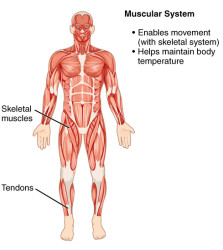
The nervous system monitors and controls the organism
The nervous system regulates the entire human organism. It reacts instantaneously to all possible changes in the human body and its environment (both internal and external) [8]. By having all the information centralized, it can then activate all the glands, organs, and muscles required for the body to answer to a signal. It is considered as the core because it monitors and controls everything that happens to the organism. It is formed by the central nervous system: brain and spinal cord, and the peripherical nervous system: nerves and sensorial receptors.
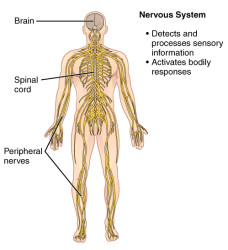
The organism regulator: the endocrine system
The main organs inside this system are the glands which secrete all the hormones needed to regulate most of the chemical reactions of the organism. The hormone's role is to regulate the metabolism, behavior, and homeostasis of the body. The endocrine system also provides the cells with nutrients and it must be mentioned that disruptions of this system lead to major global dysfunctions [9].

The cardiovascular system: the engine of the human organism
The role of the cardiovascular system is to transport blood to each tissue and cell of the body. Depending on the blood system (arterial or venous) it will contain oxygen, nutrients or it will eliminate CO2 and waste products. This system has the heart as the main organ and the blood vessels as connective tubing to transport the blood all around the body. The heart acts as a very powerful pump through a succession of chambers (atria and ventricles) [10-11].
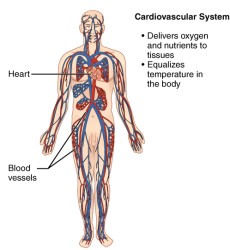
The lymphatic and immune systems: the human organism defense
The lymphatic system works together with the circulatory and cardiovascular systems. It contains lymphocytes and other white blood cells. The immune system uses white blood cells to attack all the external organism that enters the body [12].
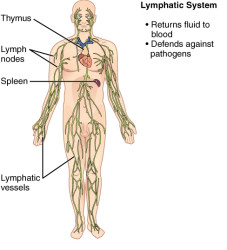
The respiratory system
This organ system provides the oxygen that the human organism requires and removes the CO2 generated by the human body. It is composed of the nasal cavity, the pharynx, the larynx, the trachea, the lungs, and all its subunits that ends with the alveolus. It works together with the cardiovascular system in the oxygen and CO2 switch that occurs at the alveolus level [13].
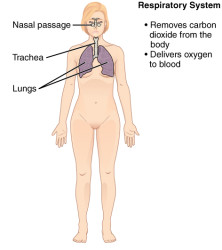
The digestive system: the feeding system of the human organism
The aim of this organ system is to decompose the aliments into nutrients that will later be absorbed and distributed to reach all the cells of the human organism. It is also in charge of defecation of the waste products from the intestine via the rectum. The digestive system is considered as of the most complex systems because it is highly involved in metabolism [14-15]. Furthermore, the digestive system is often considered as the “second brain” as it contains millions of neurons that communicate with the brain. The main organs are the oral cavity, the esophagus, the liver, the stomach, the small and gross intestines, and finally rectum and anus.
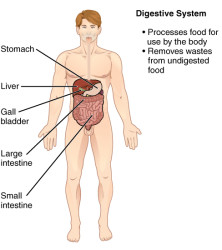
The urinary system
The main work performed by kidneys, urethra, ureters, and bladder, which hare organs of the urinary system, is to eliminate waste products that cannot be removed by the digestive system. It also filters the blood to remove any kind of waste product. The urinary organs also have a function in the regulation of the blood volume and pressure. The urinary system controls the level of metabolites and electrolytes inside the human organism and so have a strong role in homeostasis. As an example, it is involved in blood pH regulation.

Importance of understanding the complexity of the human body
Now Cherry Biotech is immersed in the Human-on-a-chip races, meaning that has to be considered as a complex interconnected entity and not as different independent parts.
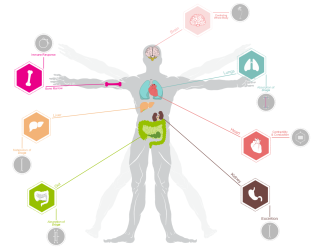
Bibliography/Sources
- Marieb EN, Lachaîne R. Anatomie et physiologie humaines. 2e éd. Saint-Laurent Québec: De Boeck Université; 1999.
- Sherwood L. Human physiology: from cells to systems [Internet]. 2015.
- McLafferty E, Hendry C, Farley A. The integumentary system: anatomy, physiology, and function of the skin. Nurs Stand.
- Soetan KO, Olaiya CO, Oyewole OE. The importance of mineral elements for humans, domestic animals, and plants – A review. African J Food Sci. 2010;4(5):200–22.
- Cooper B. The origins of bone marrow as the seedbed of our blood: from antiquity to the time of Osler. Proc (Bayl Univ Med Cent) [Internet]. 2011 Apr;24(2):115–8.
- Cohen B. Memmler’s Structure and Function of the Human body, SC. 2015.
- Kenney W, Wilmore J, Costill D. Physiology of Sport and Exercise 6th Edition. 2015.
- Kreibig S. Autonomic nervous system activity in emotion: A review. Biol Psychol.
- Casals-Casas C, Desvergne B. Endocrine Disruptors: From Endocrine to Metabolic Disruption. Annu Rev Physiol.
- Nelson B, Kaliakatsos I. Microrobots for minimally invasive medicine. Annu Rev. 2010.
- Sherwood L. Human physiology: from cells to systems. 2015.
- Romagnani S. The role of lymphocytes in allergic disease. J Allergy Clin Immunol.
- Dickson R, Erb-Downward J. The role of the bacterial microbiome in lung disease. Expert Rev. 2013.
- Gropper S, Smith J. Advanced nutrition and human metabolism. 2012.
- Boron W, Boulpaep E. Medical physiology. 2016.
See also :



